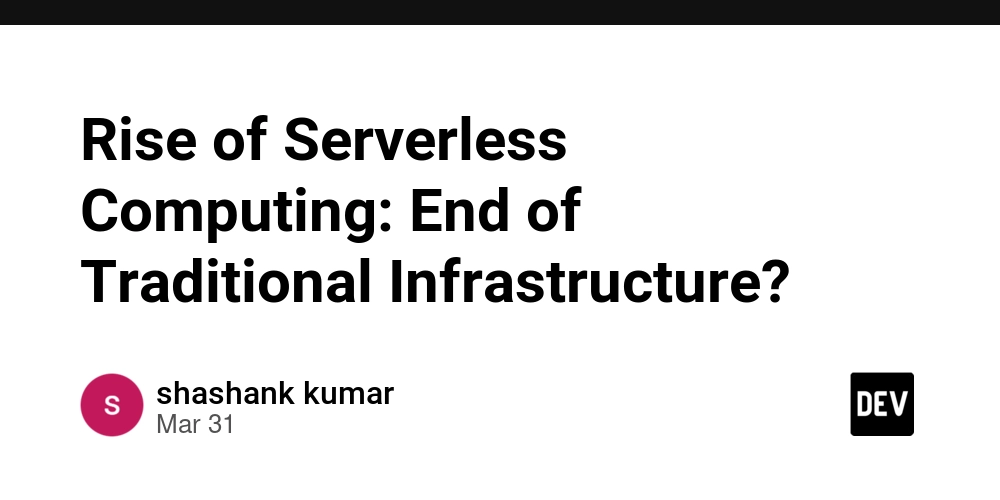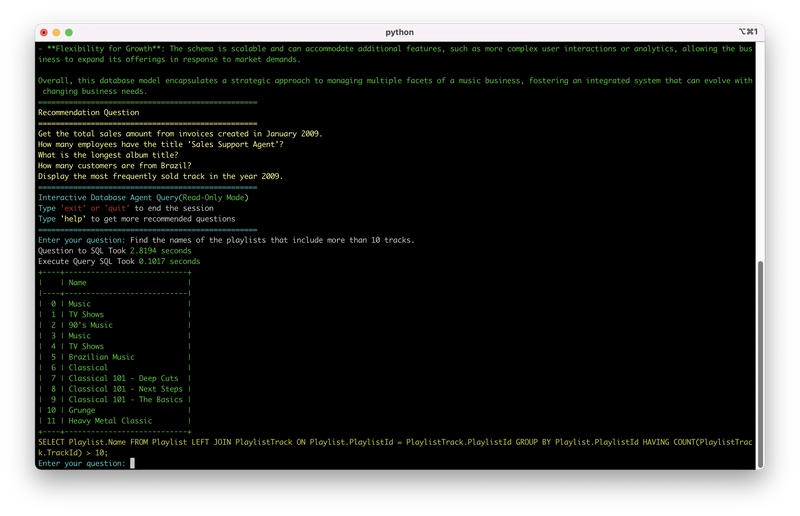Rise of Serverless Computing: End of Traditional Infrastructure?
The swift evolution of cloud computing created a paradigm-changing concept known as serverless computing in recent years. More organizations and developers, along with IT professionals, are adapting this contemporary development paradigm to accelerate their application deployment process. Under serverless computing models, organizations maintain code development while infrastructure management remains the responsibility of the platform vendor. Serverless computing does not signal an absolute conclusion for traditional infrastructure. This essay investigates serverless computing effects alongside business implications while discussing how the cloud computing course in Pune prepares experts for this evolving scenario. Understanding Serverless Computing The cloud execution model known as serverless computing enables cloud providers to dynamically allocate and provision servers. The task of server maintenance, which was operated manually by businesses, occurred commonly in traditional computing systems. Organizations using serverless computing operate their applications without needing either physical or virtual servers because the cloud provider maintains their complete backend system. Key Features of Serverless Computing Serverless computing allows automatic scaling through features that enable applications to adapt to usage requirements without needing human supervision. Users pay precisely for the processor resources they need under this pricing structure, which produces savings for customers. The ability to enhance developer productivity stands out as a major benefit since programmers dedicate time to code creation rather than infrastructure administration. Serverless computing bases its execution model on event-oriented triggers that lead to better operational results. Serverless computing transforms businesses by offering various benefits. Various industries drive the widespread serverless computing adoption because it delivers high performance alongside lower prices. Businesses achieve lower operational expenses and quicker deployments in addition to higher flexibility. Several worldwide organizations now implement serverless computing across their applications to experience better functionality and decreased costs in infrastructure management. Organizations that provide cloud computing courses in Pune now include serverless computing instruction to prepare professionals for emerging trends in this field. Serverless technologies enable IT professionals to attain optimal application development when receiving proper training. Serverless vs. Traditional Infrastructure The swift evolution of cloud computing created a paradigm-changing concept known as serverless computing in recent years. More organizations and developers, along with IT professionals, are adapting this contemporary development paradigm to accelerate their application deployment process. Under serverless computing models, organizations maintain code development while infrastructure management remains the responsibility of the platform vendor. Serverless computing does not signal an absolute conclusion for traditional infrastructure. This essay investigates serverless computing effects alongside business implications while discussing how the cloud computing course in Pune prepares experts for this evolving scenario. Understanding Serverless Computing The cloud execution model known as serverless computing enables cloud providers to dynamically allocate and provision of servers. The task of server maintenance, which was operated manually by businesses, occurred commonly in traditional computing systems. Organizations using serverless computing operate their applications without needing either physical or virtual servers because the cloud provider maintains their complete backend system. Key Features of Serverless Computing Serverless computing allows automatic scaling through features that enable applications to adapt to usage requirements without needing human supervision. Users pay precisely for the processor resources they actually need under this pricing structure, which produces savings for customers. The ability to enhance developer productivity stands out as a significant benefit since programmers dedicate time to code creation rather than infrastructure administration. Serverless computing bases its execution model on event-oriented triggers that lead to better operational results. Serverless computing transforms businesses by offering various benefits. Various industries drive the widespread serverless computing adoption because it delivers high performance alongside lower prices. Businesses achieve lower operational expenses and quicker deployments in addition to higher flexibility. Several worldwide organizations now implement serverless computing across their applications to experience better functionality and decreased costs in infrastructure ma

The swift evolution of cloud computing created a paradigm-changing concept known as serverless computing in recent years. More organizations and developers, along with IT professionals, are adapting this contemporary development paradigm to accelerate their application deployment process. Under serverless computing models, organizations maintain code development while infrastructure management remains the responsibility of the platform vendor. Serverless computing does not signal an absolute conclusion for traditional infrastructure. This essay investigates serverless computing effects alongside business implications while discussing how the cloud computing course in Pune prepares experts for this evolving scenario.
Understanding Serverless Computing
The cloud execution model known as serverless computing enables cloud providers to dynamically allocate and provision servers. The task of server maintenance, which was operated manually by businesses, occurred commonly in traditional computing systems. Organizations using serverless computing operate their applications without needing either physical or virtual servers because the cloud provider maintains their complete backend system.
Key Features of Serverless Computing
Serverless computing allows automatic scaling through features that enable applications to adapt to usage requirements without needing human supervision. Users pay precisely for the processor resources they need under this pricing structure, which produces savings for customers. The ability to enhance developer productivity stands out as a major benefit since programmers dedicate time to code creation rather than infrastructure administration. Serverless computing bases its execution model on event-oriented triggers that lead to better operational results.
Serverless computing transforms businesses by offering various benefits.
Various industries drive the widespread serverless computing adoption because it delivers high performance alongside lower prices. Businesses achieve lower operational expenses and quicker deployments in addition to higher flexibility. Several worldwide organizations now implement serverless computing across their applications to experience better functionality and decreased costs in infrastructure management.
Organizations that provide cloud computing courses in Pune now include serverless computing instruction to prepare professionals for emerging trends in this field. Serverless technologies enable IT professionals to attain optimal application development when receiving proper training.
Serverless vs. Traditional Infrastructure
The swift evolution of cloud computing created a paradigm-changing concept known as serverless computing in recent years. More organizations and developers, along with IT professionals, are adapting this contemporary development paradigm to accelerate their application deployment process.
Under serverless computing models, organizations maintain code development while infrastructure management remains the responsibility of the platform vendor. Serverless computing does not signal an absolute conclusion for traditional infrastructure. This essay investigates serverless computing effects alongside business implications while discussing how the cloud computing course in Pune prepares experts for this evolving scenario.
Understanding Serverless Computing
The cloud execution model known as serverless computing enables cloud providers to dynamically allocate and provision of servers. The task of server maintenance, which was operated manually by businesses, occurred commonly in traditional computing systems. Organizations using serverless computing operate their applications without needing either physical or virtual servers because the cloud provider maintains their complete backend system.
Key Features of Serverless Computing
Serverless computing allows automatic scaling through features that enable applications to adapt to usage requirements without needing human supervision. Users pay precisely for the processor resources they actually need under this pricing structure, which produces savings for customers. The ability to enhance developer productivity stands out as a significant benefit since programmers dedicate time to code creation rather than infrastructure administration. Serverless computing bases its execution model on event-oriented triggers that lead to better operational results.
Serverless computing transforms businesses by offering various benefits.
Various industries drive the widespread serverless computing adoption because it delivers high performance alongside lower prices. Businesses achieve lower operational expenses and quicker deployments in addition to higher flexibility. Several worldwide organizations now implement serverless computing across their applications to experience better functionality and decreased costs in infrastructure management.
Organizations that provide cloud computing classes in Pune now include serverless computing instruction to prepare professionals for emerging trends in this field. Serverless technologies enable IT professionals to attain optimal application development when receiving proper training.
Is Traditional Infrastructure Becoming Obsolete?
Serverless computing serves as a revolutionary force in IT operations but does not mark the complete elimination of traditional infrastructure models. Complex applications within large enterprises tend to choose conventional infrastructure systems to retain full management control and program customization capabilities. Organizations choosing these verticals need their dedicated infrastructure because strict regulatory standards need to be followed.
Serverless computing revolutionizes IT operations specifically for startups and small businesses, along with projects needing quick development and deployment. Businesses commonly choose hybrid cloud approaches, which combine serverless computing technology and conventional infrastructure to maintain a proper balance between expense and control and performance requirements.
The cloud computing classes in Pune serve as essential tools to merge industry experience with serverless and traditional computing knowledge and skills. The knowledge of cloud platforms and automation, together with security aspects, enables IT professionals to select the optimal infrastructure model for their projects.
The Future of Serverless Computing
Serverless computing maintains a bright outlook because cloud service providers regularly provide better solutions to the market. AI, together with machine learning and edge computing, will continue developing serverless architecture, which will result in enhanced efficiency as well as adaptability to various business requirements. The number of companies using serverless computing will increase in cloud transformation initiatives.
Businesses will find it simpler to connect serverless computing to their existing frameworks through enhanced development of hybrid cloud and multi-cloud environments. Better serverless framework iterations will eradicate significant operational challenges, enabling wider implementation of these frameworks.
The adoption of serverless computing helps businesses achieve better performance and reduced operational expenses, which establishes a competitive advantage. IT professionals who want to succeed in the industry should choose cloud computing classes in Pune because this training provides vital knowledge about the profession, together with practical experience in the field.
Conclusion
Applications get developed and deployed through serverless computing architectures, which have revolutionized modern application development methodology. Traditional infrastructure continues to provide benefits that make it suitable for certain deployment situations. Every organization needs to evaluate its unique requirements before deciding to adopt serverless solutions. Taking a cloud computing course in Pune presents IT professionals with an essential opportunity to grasp current cloud technologies as their field evolves.
Advancements in the IT industry mean the value of knowing traditional and serverless computing will continue increasing. Those in development roles and IT professionals, alongside business operators, need to comprehend serverless methodologies and cloud systems to make proper infrastructure choices.











































































































































































![[The AI Show Episode 142]: ChatGPT’s New Image Generator, Studio Ghibli Craze and Backlash, Gemini 2.5, OpenAI Academy, 4o Updates, Vibe Marketing & xAI Acquires X](https://www.marketingaiinstitute.com/hubfs/ep%20142%20cover.png)




























































































































![[DEALS] The Premium Learn to Code Certification Bundle (97% off) & Other Deals Up To 98% Off – Offers End Soon!](https://www.javacodegeeks.com/wp-content/uploads/2012/12/jcg-logo.jpg)


![From drop-out to software architect with Jason Lengstorf [Podcast #167]](https://cdn.hashnode.com/res/hashnode/image/upload/v1743796461357/f3d19cd7-e6f5-4d7c-8bfc-eb974bc8da68.png?#)








































































































.png?#)

































_Christophe_Coat_Alamy.jpg?#)
 (1).webp?#)





































































































![Apple Considers Delaying Smart Home Hub Until 2026 [Gurman]](https://www.iclarified.com/images/news/96946/96946/96946-640.jpg)
![iPhone 17 Pro Won't Feature Two-Toned Back [Gurman]](https://www.iclarified.com/images/news/96944/96944/96944-640.jpg)
![Tariffs Threaten Apple's $999 iPhone Price Point in the U.S. [Gurman]](https://www.iclarified.com/images/news/96943/96943/96943-640.jpg)




































































































































